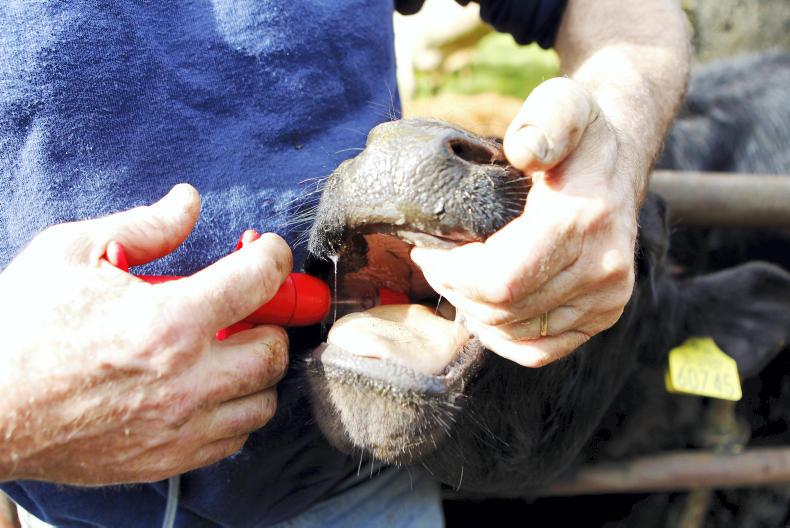Encouraging natural immunity to worms is important; cattle need to have some level of exposure during their first grazing season and over-dosing will lead to resistance issues and no level of immunity building up. Calves that have being grazing since spring will most likely have picked up worms that have now just completed their first life cycle and the first dose should take place soon
1. Faecal egg count (FEC)
If there are no visible signs of worm problems, FEC can be used to verify any underlying worm burdens. Taking dung samples to assess whether to dose or not can be a useful management tool. This will tell you what the worm burden is like in the calves while also diagnosing which parasite is causing problems, stomach worms, lungworms or liver fluke. In consultation with your vet, pooling samples from 10 to 15 calves and having samples analysed at a veterinary laboratory will be a worthwhile exercise. Routine dosing offers little benefit if there is a low worm burden present and will increase anthelmintic resistance.
2. Weigh cattle at dosing
Weighing animals at dosing or prior to dosing can be greatly help in avoiding under-dosing or over-dosing animals. Guessing the weight of an animal means there is a risk of under-dosing cattle. Therefore, animals will not be properly treated and can also lead to resistance building up on the farm. Weighing is also a great management tool to assess whether animals are thriving or not.
3. Do not dose and move
Rather than moving animals to clean pasture after dosing, return cattle to the paddocks they were in for another two to three days to reduce contamination of clean grazing. Bought-in cattle have a different health status to home-bred animals. Put bought-in animals on to contaminated pasture until they have been dosed.
4. Follower leader grazing
Where calves are weaned, a follower-leader system can help to offer clean grazing to young stock. Allow calves to graze for one to two days before moving on to the next paddock. Use cows to clean out the paddocks afterwards, by grazing the cows behind the calves.
5. Change wormers
Rotate worming products to reduce resistance and get a more effective kill and cover period. Research at Teagasc Grange has highlighted potential issues around wormer resistance on Irish livestock farms. While resistance to all three classes of anthelminthic wormers (white, yellow and clear drenches) has been found recently on sheep farms, the extent of the problem on cattle farms is as yet unquantified but cattle farms need to be vigilant for any issues as it's probably only a matter of time before we see further large-scale issues on cattle farms.






 This is a subscriber-only article
This is a subscriber-only article












SHARING OPTIONS: